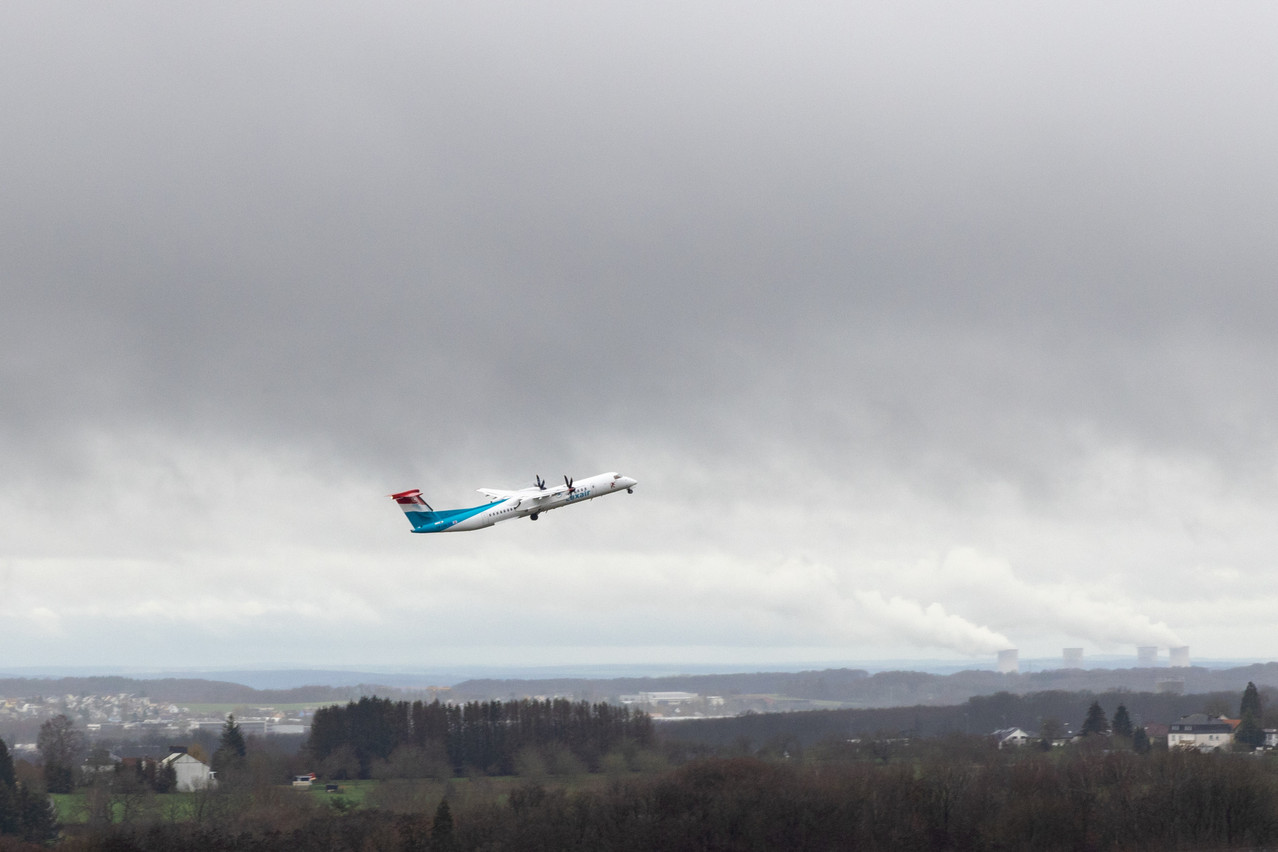Warning of turbulence. A few days ago, tempers flared between the LCGB and the Luxembourg government. In a press release, the union criticised the minister for mobility, (DP), for wanting to implement the plan, in the bunkers of the European Union Aviation Safety Agency (EASA), to on certain phases of commercial flights.
“False,” replied the ministry through a press release, pointing out that in Backes’ reply to a parliamentary question submitted by deputies (LSAP) and (LSAP), the mobility minister had merely stated that “the Luxembourg government and the airlines Luxair and Cargolux respect the authority and competence of EASA… whose regulations are applied through the Luxembourg Civil Aviation Authority (DAC).” Potential application would take place from 2027. “The project… is currently being studied by EASA. There is therefore nothing that could be ‘implemented’ by the minister,” the government reminded the LCGB.
Twice as many passengers in 20 years
One term was absent from this exchange: “shortage.” Yet this is an inseparable aspect of the debate. On one hand, air traffic is constantly growing. According to the International Air Transport Association (IATA), which brings together some 330 airlines worldwide (including Luxair), the annual number of passengers is set to double in 20 years, to 8.6bn. As early as this year, the record (4.54bn) set in 2019--the last year before covid--is expected to be beaten.
On the other hand, there are far from enough airline pilots to satisfy the exponential demand for flights. Studies vary, as do the figures. The figure of 50,000 missing pilots by 2025, and 80,000 within ten years, is frequently put forward. IATA estimates that half a million pilots will need to be recruited around the world over the next two decades. It is therefore difficult to disconnect EASA’s work from this trend. In Europe, 5,000 to 6,000 new pilots will be needed every year.
80 pilots a year at Luxair
Luxair did not wish to respond to Paperjam’s enquiries. But “Luxair has every confidence in EASA, which, following an in-depth risk assessment, will approve, or not, any acceptable alternative means of complying with existing regulations,” the Luxembourg aircraft manufacturer told us during the summer.
“Luxair needs 80 operational airline pilots every year to be able to function properly,” stated the director of the Aérofutur training centre, Lionel Marti, quoted last week by the French daily L’Indépendant. Located in the south of the country, in Perpignan, the school founded by Marti is one of ten selected by Luxair as part of its training plan. Costs of up to €100,000 are likely to be pre-financed by the company.
An industry that’s out of step
Luxembourg’s Paul Reuter, vice-president of the European Cockpit Association (ECA), which boasts 38,000 professionals across the continent, says he is “rather sceptical about the veracity of these projections [of future shortages]” and the explanations given, “because the reality is more nuanced.”
“What we are seeing,” he explains, “is that as soon as there is a major crisis (economic, political or health-related), this has an impact on the volume of air traffic. The industry quickly gets rid of ‘redundant’ staff, and therefore also pilots... only to find that, when traffic picks up again, it doesn’t have the number of pilots it needs. This is due to the fact that most airlines are reactive rather than proactive, and to the complexity of updating the qualifications of pilots who were unemployed.”
Small against big
The former chair of the Association Luxembourgeoise des Pilotes de Ligne adds: “There will be a challenge, when generation X reaches retirement age in the next five to ten years, to replace them in the cockpits.”
But Reuter points to another problem: “With the increase in air traffic since the end of the health crisis, there has been a real ‘migration’ of pilots to companies that, for many, could be described as their ‘first career choice.’ These are the major European airlines such as Air France, Lufthansa, KLM and others, which offer very attractive career choices and conditions compared with the rest of the industry. This aspiration effect means that many small and low-cost airlines are finding it difficult to recruit and train enough pilots to replace those who have resigned. It takes a company between two and six months to recruit and train a pilot, even an experienced one. This can be compounded by delays due, for example, to the lack of availability of flight simulators.”
“Since the pandemic, there is a real shortage of qualified personnel in all aviation professions (crew members, ground staff, air traffic control, etc.) and this is partly linked to the fact that the industry underestimated the post-covid recovery. But also because, for years, there has been a ‘race to the bottom.’ Difficult working hours, a tough working environment... This has prompted many people to change careers. Not to mention the fact that the new generation has a lot more choice when it comes to finding interesting jobs that offer a better work-life balance than being a pilot,” concludes Reuter.
The official EASA opinion is expected in 2026.
This article was originally published in .
